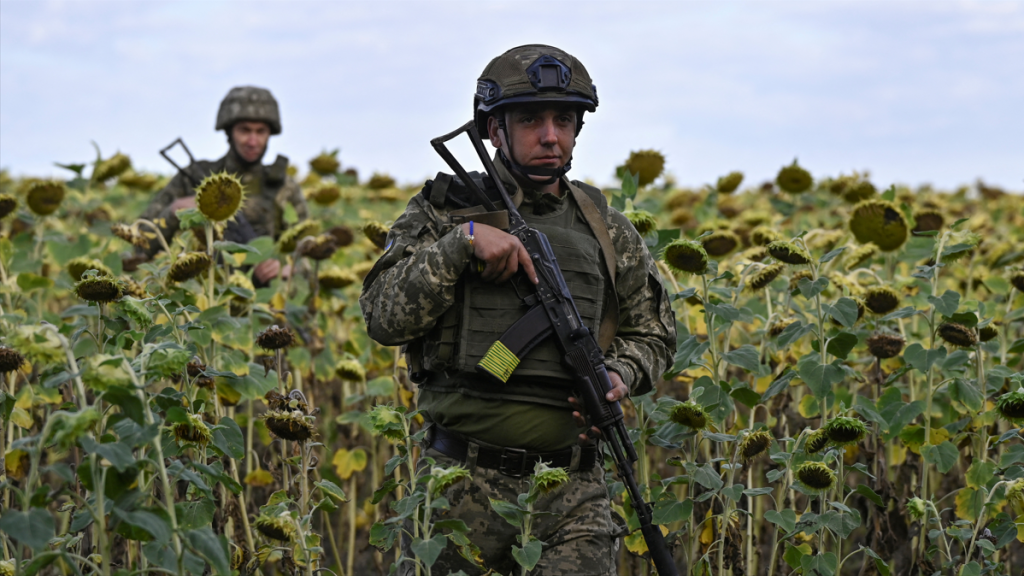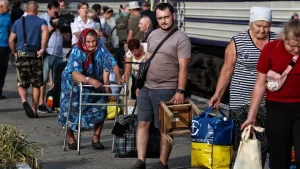Urgent Warning: Ukrainian Forces Face Encirclement as Russian Advance Escalates
3 min read

The situation in eastern Ukraine is becoming increasingly dire as Russian forces make significant advancements. A Ukrainian military officer, speaking confidentially near the front lines south of Pokrovsk, has raised alarms about the critical state of affairs. The officer, who chose to remain anonymous, reported that Russia’s current military strategy involves encircling Pokrovsk, a vital transportation hub in the region.
According to the officer, Ukrainian military leadership is determined to hold their positions despite severe losses in troops and resources. This tactic has led to the creation of “cauldrons,” or large areas surrounded by Russian forces, significantly compromising Ukrainian defense. One notable cauldron lies south of Pokrovsk, encompassing Nevelske, Hirnyk, and Krasnohorivka. The officer criticized the decision to maintain positions near Nevelske while losing ground in Hirnyk, arguing that a strategic retreat to Hirnyk could minimize resource loss and bolster defensive efforts.
The officer described the situation in the Donetsk region as resembling a squid with numerous tentacles. Defending all these points requires a vast number of positions, observation posts, and resources. The current strategy of holding extensive positions is viewed as imprudent given the Russians’ superior numbers and resources. This approach has resulted in Ukrainian brigades being overextended and often wiped out while defending the perimeter of these cauldrons.
Roman Pohorily, an analyst and co-founder of the Deep State map that tracks frontline developments, noted that Ukrainian troops have recently withdrawn from Nevelske to avoid encirclement. Although this maneuver has reduced the immediate threat, the front-line officer argues that such a retreat should have occurred earlier to prevent unnecessary losses of lives and resources.
Russian forces are advancing towards Kurakhove, a city located approximately 35 kilometers (21 miles) south of Pokrovsk. Ukrainian troops in this sector have reported a recent intensification of fighting. Ukraine’s General Staff confirmed this escalation, noting 32 clashes in the Pokrovsk direction and 48 in the Kurakhove direction in their latest briefing.
Maj. Serhiy Tsekhotsky from the 59th Brigade highlighted that Russian forces are attempting to strengthen their flanks to position themselves closer to Pokrovsk. Their strategy includes a partial encirclement of the city, with intentions to severely damage it. Lt. Col. Oleh Demyanenko of the 110th Brigade also reported that Russian forces are focusing their efforts on the southern flank, particularly in the Kurakhove area, while maintaining direct assaults on Pokrovsk.

Russian tactics include launching small group assaults, often without armored support, as described by Maj. Tsekhotsky. These small units attempt to capture strategic points, and once they have sufficient numbers, they coordinate attacks on Ukrainian positions.
The flat terrain around Kurakhove presents challenges for both defense and advancement. Nazar Voytenkov from the 33rd Brigade noted that this terrain leads to frequent artillery exchanges, causing significant Russian losses in vehicles and personnel. Despite these difficulties, his brigade is successfully maintaining its position on the front line.
Kurakhove’s road connections to Pokrovsk are crucial for troop and supply movements. If Russian forces capture Kurakhove, they could potentially launch new attacks on Pokrovsk from an advantageous position. Analyst Roman Pohorily also mentioned the possibility of a Russian assault on Ukrainian positions in Vuhledar, a city in the southern Donbas frontline that has been a persistent target for Russian forces.
The officer on the front lines believes that strategic errors in the past have left only one viable option for defending Pokrovsk and preventing the Russians from seizing the entire Donetsk region. The officer suggests a strategy similar to the defense of Bakhmut, where significant resources and personnel were committed despite the city’s eventual devastation. This approach, while costly, could potentially delay Russian advances and provide a critical defense for the region.
WhatsApp us